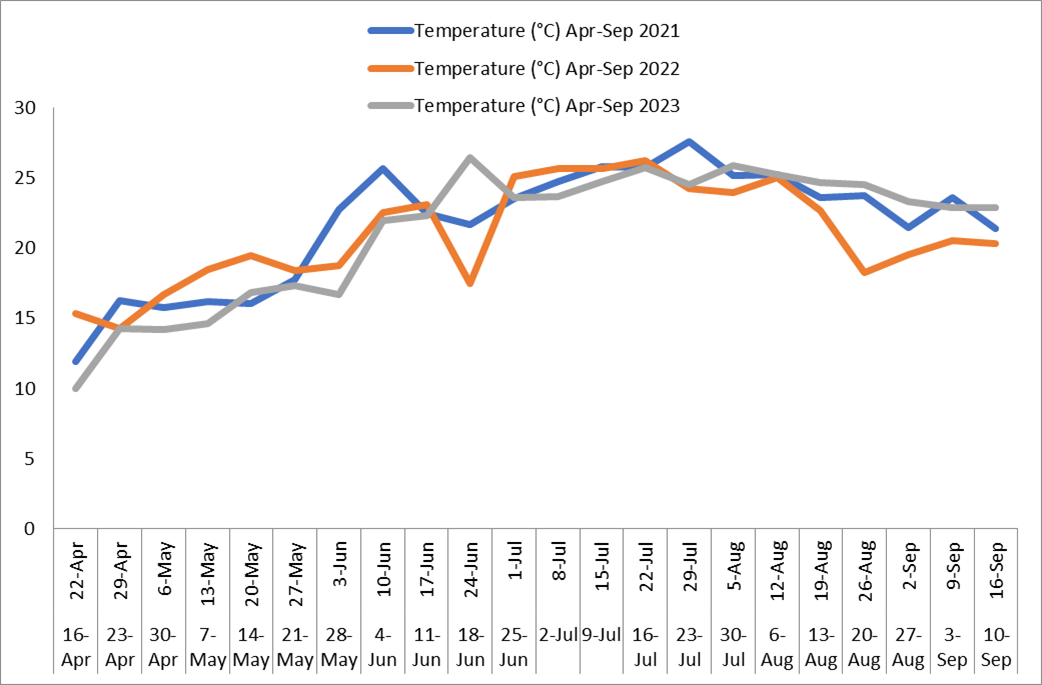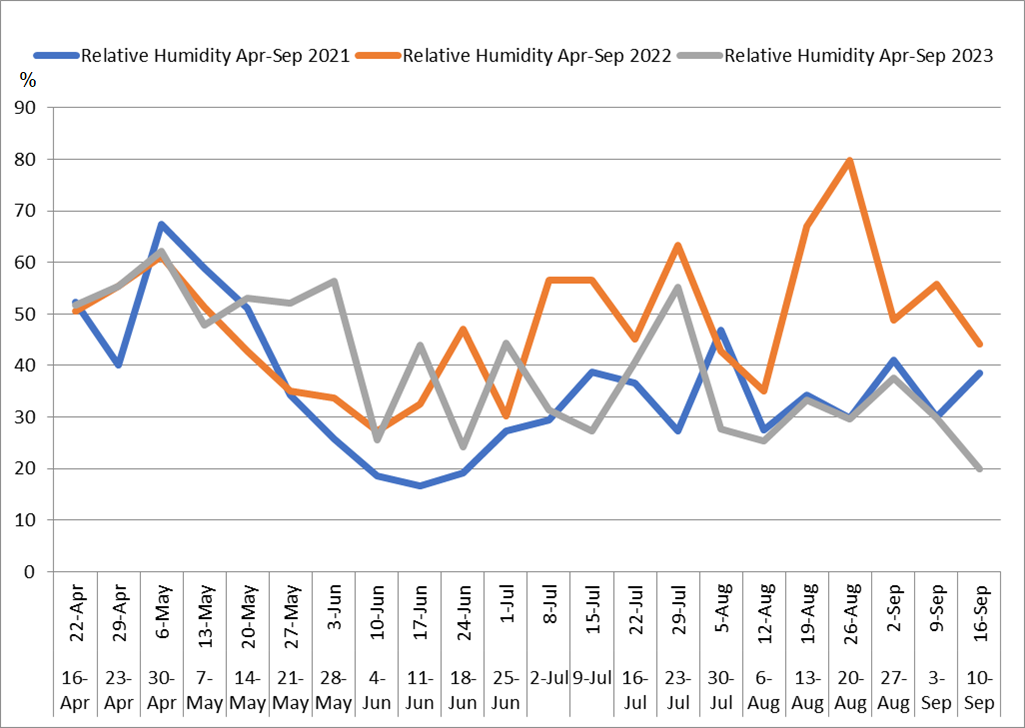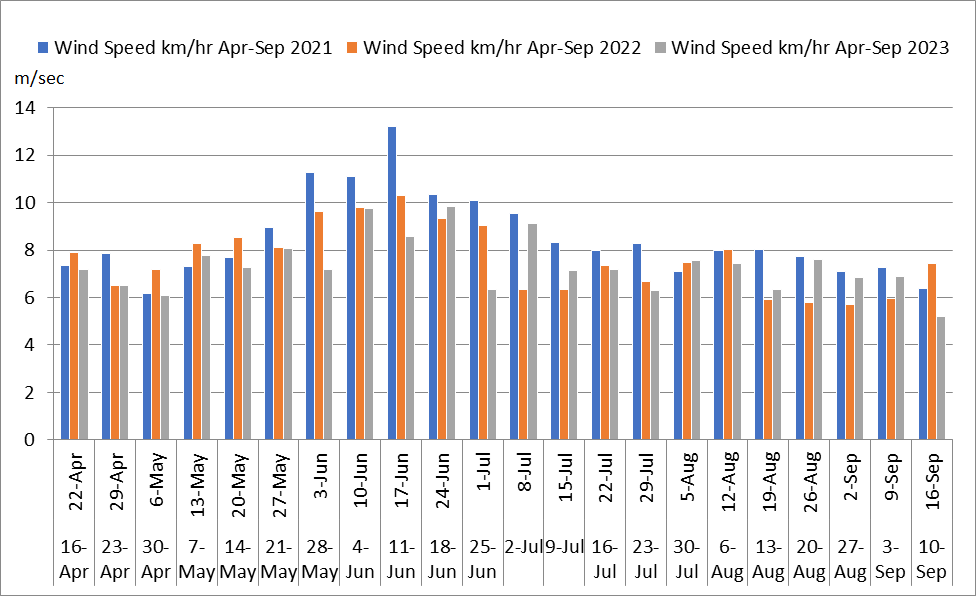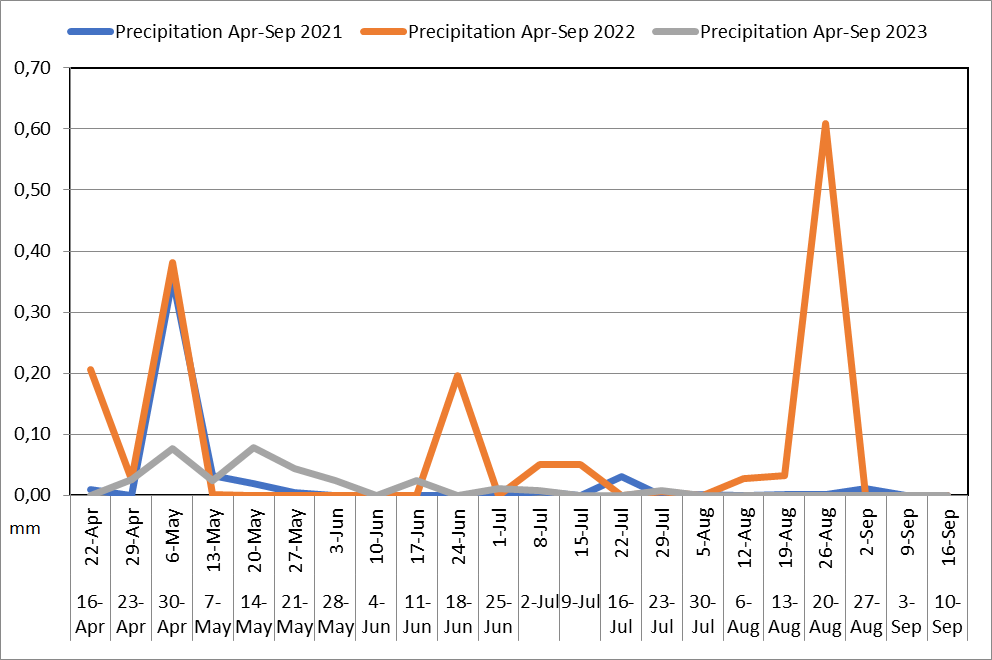The Role of Plant Growth Regulators in Soybean Cultivation
The Role of Plant Growth Regulators in Soybean Cultivation
Abstract
It is known that plant growth regulators play an important role in stimulating growth functions and shaping the yield of agricultural crops. Soybean is one of the promising agricultural crops in various countries. However, little research has been conducted on the role of plant growth regulators in soybean under different growing conditions. The purpose of the study was to study the influence of growth regulators on the formation of elements and the amount of yield, as well as on the quality indicators of soybean seeds when grown in Afghanistan.
Research methodology. Studies have examined various doses of gibberellin in soybeans. The object of research was soybean (Glycine max L.) of the early variety Stine 3400/2. The growth regulator Gibberellin was used in the studies. The growth regulator was used by treating seeds with different concentrations of a biological product solution at the rate of 25, 50 and 75 ml per 100 kg of seeds. The control was the option without the use of a growth regulator. The research was conducted at the agricultural experimental plot of Kabul University between April 2021 and September 2023. Experimental plots were placed in a randomized complete block design with three replications. Statistical processing of research results was carried out using software (ANOVA) and using the analysis of variance method.
Research result. Studies have shown that the use of a growth regulator contributed to increasing the yield of soybean plants and obtaining seeds of the best quality. The greatest effectiveness of the drug was manifested in the variant where the seeds were treated with gibberellin at the rate of 50 ml per 100 kg of seeds. The maximum plant yield (1.32 t/ha) and seeds with the highest oil and protein content were obtained. Under these growing conditions, seeds of the best quality and with the highest oil (12.4%) and protein (42.7%) content were obtained. The result of statistical processing using ANOVA and using the analysis of variance method confirmed the reliability of the results obtained.
1. Introduction
Soybean (Glycine max L.) is a worldwide agricultural crop of the Leguminosae family, subfamily Faboideae. It holds significant importance as one of the leading oil and protein-containing crops worldwide. With its high nutritional value and versatile applications, soybean has earned the nickname "Golden Bean" and is considered a miracle crop of the 21st century. The climatic and edaphic conditions of Afghanistan are favorable for soybean production, making it a promising crop for the country. However, the average soybean yield in farmers' fields is often lower than potential due to the lack of modern agrotechnological techniques, without the use of a large number of highly effective growth regulators based on natural physiologically active substances or their synthetic analogues, as well as new protective and stimulating complexes. Soybeans are one of the crops that can be grown using «organic» technology. This is possible due to the fact that soybeans are nitrogen-fixing crops. It can accumulate 20 to 40 kg/ha of N2 in the soil, which is important for crop rotation in Afghanistan. To obtain high soybean yields, it is necessary to increase soil fertility and mechanical composition indicators, provide moisture, use drip irrigation, optimal content of mobile forms of nutrients in the soil, the activity of biological nitrogen fixation and other factors. High soya seeds yields can be obtained only when it is cultivated using the principles of zonal farming, i.e. when the issues of selection of varieties and place in crop rotation have been optimally resolved, varietal agricultural technology, a fertilizer system in combination with a set of measures to combat pests, diseases and weeds have been developed. The reproductive structures of soybean, which undergo production, fixing, and transformation into pods with seeds, play a crucial role in determining the crop's potential yield. Therefore, studying the spatial dynamics of these structures and their correlation with yield is essential .
Scientists from many countries have reported positive results from the use of biologically active substances of various chemical compositions, plant growth regulators, for example: salicylic acid, succinic acid, gibberellin, kinetin, humic and fulvic acids to increase the yield of soybean seeds and other oilseeds. Over the past 10 years, Afghan farmers have begun to grow soybeans in different regions of the country, emphasizing the need for intensive research activities aimed at increasing its yield. As the quest for increasing productivity becomes more challenging, bio regulators can emerge as valuable tools . Bio regulators are organic compounds that, when applied in low concentrations, can inhibit, promote, or modify physiological-biochemical processes of plants.
Such substances that regulate the growth and development of plants can be isolated from medicinal or essential oil plants, but can be synthesized under artificial conditions. Treatments with protective-stimulating complexes can be carried out several times per season. As a rule, seeds are treated before sowing, or the leaf surface or plants are treated several times at different phases of the growing season. Such treatments increase the resistance of plants to unfavorable environmental factors (for example, excess moisture or drought, low or excessive light, wind loads and other factors) and accelerate the kinetics of plant growth and development. The final positive result is an increase in grain productivity and the production of high-quality products. The results of research by many agronomists have shown the effectiveness of using pre-sowing seed treatment with bioregulators to intensify various physiological and morphological processes at the germination stage and in the first phases of plant development , .
When using modern plant growth stimulants, it is necessary to take into account that the effectiveness of the main component in the growth regulator depends on the chemical and physicochemical properties of the remaining components of the mixture. If treatment with bio-regulators is carried out through plant leaves, then it is necessary to introduce chemical substances into the mixture that reduce surface tension, and the substance can penetrate the cell wall and exhibit its activity . In recent years, protective and stimulating complexes obtained from plants have begun to be used in increasing quantities for plant treatment. Such bio-regulators increase the yield and quality of agricultural products , .
The activity of protective-stimulating complexes and their individual components depends on the concentration of the main substance. As a rule, the concentration range of the chemicals used is 10-3 - 10-7 Mol/l. Such components in small concentrations accelerate the course of many physiological processes in plants, increase plant resistance to drought, excess moisture, sudden temperature changes, and increase stress resistance , , . An analysis of the literature has shown that over the past 20 years, there has been no experimental data on the effect of protective-stimulating complexes on soybean seeds or plants, the yield and quality of seeds and oil, carried out on the territory and for the agroclimatic conditions of Afghanistan. Over the years, breeders have created new highly productive soybean varieties, as well as genetically modified soybeans. Therefore, it is necessary to conduct scientific research to assess the effect of protective-stimulating complexes on the yield and quality of soybean products.
The objective of our research was to use the available growth regulator gibberellin, treat soyaseeds with this gibberellin in different concentrations, observe the rate of growth and development of plants, the quality of the crop, assess productivity, identify the most effective concentration and give recommendations to agronomists.
2. Research methods and principles
Field trials were carried out at Kabul University's Agriculture Faculty research farm in Afghanistan, located at coordinates 34°N 69°E, with an average altitude of 540 meters. The assessment of soybean productivity under different options for pre-sowing seed treatment with a preparation based on gibberellin in the period from 2021 to 2023 was carried out under microfield experiment conditions. The placement of experimental plots was carried out according to a randomized design according to Dospehov, the experiments were repeated three times. The counting area of each plot was 6 m2 (3 x 2 meters). The distance between rows was 40 cm, the distance between plants was 20 cm.
Seeds of the Stine 3400/2 early soybean cultivar were directly sown at a depth of approximately 5 cm, with a density of 20 seeds per meter. Fertilization involved the application of diammonium phosphate (DAP) during cultivation, and urea was administered three times during cultivation, vegetative growth, and flowering stages. Bradyrhizobia were used for seed inoculation. Data sheets were maintained to keep records of the experiment. The research was conducted over a period of three years, from 2021 to 2023, with sowing taking place between April 22 and September 13.
The treatment included three doses of the plant growth regulator gibberellin. In the control group of the experiment, gibberellin was not used, and the seeds were treated with distilled water. The experimental design involved treating seeds with a gibberellin solution at rates of 25, 50, and 75 ml per 100 kg of seeds. The agrochemical characteristics of the soil at the experimental site indicated that it belonged to light gray soils (light sierozems) with a slightly alkaline pH of 7.4. The soil had a humus content of 1.2%, total nitrogen content of 0.10%, total phosphorus content (P2O5) of 0.14%, and mobile potassium (K2O) content of 110 mg/kg soil. Cultural management practices followed the guidelines of the regional production system, with mechanical methods employed for weed control. At the full maturation stage (R8 stage), pod and seed counts per plant were evaluated by tallying pods and seeds from 15 randomly selected plants in the survey area of each plot. Harvesting was performed manually eight days after the R8 stage. The mass of seeds, leaves, and straw was measured by weight using digital scales.
An important indicator for assessing the dynamics of growth and development of soybean plants is the concentration of nitrogen and photosynthetic pigments (chlorophyll a and b, carotenoids) in plant leaves. To measure these indicators, a SPAD-502 device manufactured by Minolta (Japan) was used. The measurement technique consisted of assessing the indicators for three mature plants from each plot, calculating the average SPAD values for each option, and recalculating the concentration of chlorophyll and nitrogen according to the recommendations of the device manufacturer and methodology . Nitrogen concentration was also measured using the standard Kjeldahl method. A caliper was used to measure the length of pods and seeds.
Statistical processing of the results was carried out using the analysis of variance (ANOVA) method, taking into account Dospehov’s recommendations.

Figure 1 - Temperature during the growing season in 2021, 2022, and 2023

Figure 2 - Relative air humidity during the growing season (2021, 2022, 2023)

Figure 3 - Wind speed during the growing season (2021, 2022, 2023)

Figure 4 - Amount of precipitation during the growing season (2021, 2022, 2023)
3. Main results
The results of the study showed that the use of gibberellin for pre-sowing seed treatment at concentrations of 50 and 75 ml per 100 kg led to a tendency to increase pod length to 2.4 cm relative to the control and a concentration of 25 ml/100 kg. However, analysis of variance (ANOVA) did not reveal significant differences between the gibberellin treatments, as shown in Table 1. Our findings are consistent with the results obtained in previous studies , where the authors used higher doses of gibberellin more than 80 ml per 100 kg. When treating soyaseeds with growth stimulants, it is necessary to control varietal responsiveness and take into account growth dynamics, yield and quality of seeds and biomass, since for different varieties the effect of treatment with growth regulators on plants may be different.
The maximum number of seeds per pod (1.6) was detected when applying 25 and 50 ml per 100 kg, while the control had a minimum number of seeds per pod (1.4). However, analysis of variance also did not reveal significant differences between treatments, as shown in Table 1. However, pod length was correlated with 100 grain weight.
Table 1 - Effect of different gibberellin concentrations on the morphometric parameters of soybean (2021/2023)
Treatments | Pod length (cm), Average 2021–2023 | Seeds/pod, Average 2021–2023 |
T1 (Control) | 2.3 | 1.4 |
T2 (25 ml 100 kg-1) | 2.3 | 1.6 |
T3 (50 ml 100 kg-1) | 2.4 | 1.6 |
T4 (75 ml 100 kg-1) | 2.4 | 1.5 |
SE (m) | 0.035 | 0.050 |
C.V (%) | 2.5 | 5.7 |
C.D (p= 0.05) | N/A | N/A |
The maximum number of seeds in a pod was found for treatment options of 25 and 50 ml per 100 kg, which is 14% higher compared to the control (Table 1). Increasing the number of seeds per pod and seed weight by 10% (Table 2) ultimately leads to an increase in soybean yield, which is a good indicator of the effectiveness of using different concentrations of gibberellin.
An increase in the number of seeds per pod for soybeans when treated with other plant growth regulators, for example, salicylic acid when adding 50 ppm salicylic acid at the flower + pod nucleation stage was noted in . The authors also observed an increase in seed weight by 10-12% compared to the control.
Similar results were obtained in , where the authors treated with kinetin and observed the effect of increasing seed weight after treatment. In our experiments, we observed that the maximum yield (1.32 t/ha) was obtained when using gibberellin at the rate of 50 ml per 100 kg, and the lowest yield was in the control variant (1.19 t/ha). Analysis of variance revealed a significant difference between treatments and a standard deviation was applied to show the differences between the 50 ml per 100 kg gibberellin pre-treatment and 75 ml per 100 kg gibberellin treatment in yield (Table 2). The average chlorophyll content (a+b) in soybean leaves during the test period was 1.57±0.07 mg/g. Significant differences relative to the control are available only for option T3.
Table 2 - Effect of seed treatment with different concentrations of gibberellin on soybean yield indicators (2021/2023)
Treatments | 100 seeds/gr, Average 2021–2023 | Yield gr/m2 Average 2021–2023 |
T 1 (Control) | 11.6 | 119.4 |
T 2 (25 ml 100 kg-1) | 11.9 | 121.7 |
T 3 (50 ml 100 kg-1) | 12.8 | 131.6 |
T 4 (75 ml 100 kg-1) | 11.6 | 130.1 |
SE (m) | 0.3 | 0.9 |
C.V (%) | 5.0 | 1.3 |
C.D (p= 0.05) | N/A | 3.2 |
Consequently, over three years of research, we observed a significant increase in soybean seed yield when using gibberellin to treat soybean seeds of the Stine 3400 variety, which we received from Korea. The originator of the variety is the United States of America with a potential yield of 2.5 tons per hectare. For the conditions of conducting experiments in Afghanistan on the fields of the university, we obtained a yield of about 60% of the potential yield. This, in our opinion, is a good indicator.
The results obtained were confirmed statistically. The maximum Humidity percentage (9.1%) was found from bio regulator at 75 mL per 100 kg, while the minimum (6.3%) was attained from bio regulator at 50 mL per 100 kg, (Table 3). Kariya et al. (2003) reported that Gibberellin treatment increased the percentage of Humidity in seeds. The maximum Cellulose percentage (19.3%) was found from Control, while the minimum (18.5%) was attained from bio regulator at 50 mL per 100 kg, (Table 3).
Table 3 - Effect of treating soybean seeds with different concentrations of gibberellin on the chemical composition of soybeans (2021-2023)
Treatments | Humidity, %, Average 2021–2023 | Cellulose, %, Average 2021–2023 |
T 1 (Control) | 8.9 | 19.3 |
T 2 (25 ml 100 kg-1) | 7.6 | 18.7 |
T 3 (50 ml 100 kg-1) | 6.3 | 18.5 |
T 4 (75 ml 100 kg-1) | 9.1 | 19.0 |
Application of plant growth regulators showed significant effect on protein percentage of soybean seed (Table 4). The highest protein percentage (42.7%) was recorded from bio regulator at 50 mL per 100 kg, and the lowest (40.2%) was obtained from control. indicated that Gibberellin can enhance the protein percentage of soybean. Different time of application also significantly influenced the protein percentage of soybean seed (44%). The maximum oil percentage (12.4%) was found from bio regulator at 50 mL per 100 kg, while the minimum (10.0%) was attained from bio regulator at 75 mL per 100 kg, (Table 4).
Table 4 - Effect of treating soybean seeds with the growth regulator gibberellin on the protein and oil content of soybeans (2021-2023)
Treatments | Protein, %, Average 2021–2023 | Oil, %, Average 2021–2023 |
T1 (Control) | 40.2 | 10.2 |
T2 (25 ml 100 kg-1) | 40.9 | 11.9 |
T 3 (50 ml 100 kg-1) | 42.7 | 12.4 |
T4 (75 ml 100 kg-1) | 40.6 | 10.0 |
When growing soybeans, the main attention is paid to quality indicators, among which protein and oil content are important. For protein, amino acid composition must also be controlled, and for soybean oil, fatty acid concentrations are important. Analysis of the data we obtained during our experiments confirms that farmers can be recommended to treat soybean seeds with gibberellin before sowing the seeds in the soil. This technique can be combined with seed treatment with fungicides. The use of gibberellin for pre-sowing treatment of soybean seeds increases the protein yield per unit area by 5-7%, and the yield of soybean oil by 15-20% relative to the control option, where treatment with gibberellin was not carried out.
One of the challenges facing Afghan farmers today is increasing the production of vegetable protein. Soy protein, which contains essential amino acids, vitamins, dietary minerals, isoflavones, phospholipids and other useful chemical components, is used in food production and is also used as feed for farm animals and poultry.
4. Conclusion
Therefore, experimental data we obtained on treating soybean seeds treatment with gibberellin show its positive effect on soybean yield, protein and oil content in soybeans.
When growing soybeans in the conditions of Kabul (Afghanistan), we can recommend introducing new elements into the agricultural technology of soybean cultivation. We recommend that farmers use the growth regulator gibberellin to achieve higher yields in their fields. In addition, our research shows the great production potential of soybeans for producing vegetable protein and soybean oil.
The use of gibberellin for pre-sowing seed treatment at a concentration of 0.5 l/ton of seeds helps to increase soybean yield by 10–12% and protein by 5–7% relative to control. Pre-sowing treatment of seeds with gibberellin at a concentration of 0.25 and 0.5 l/ton leads to an increase in soybean oil collection by 15–20% relative to the option that does not use gibberellin.
